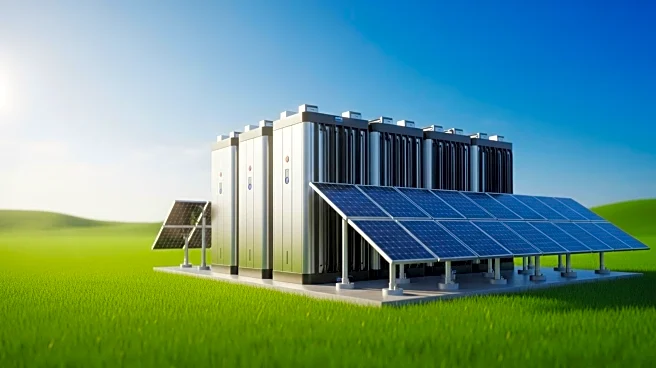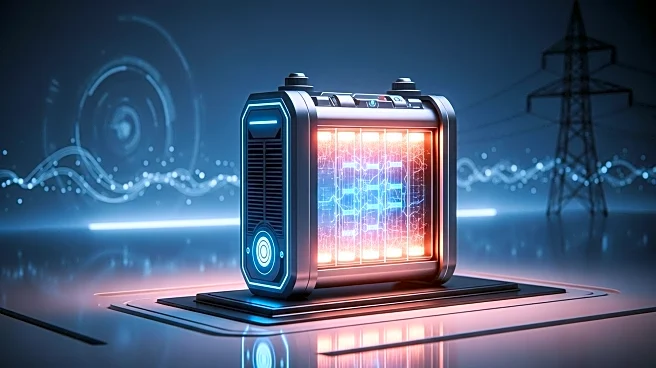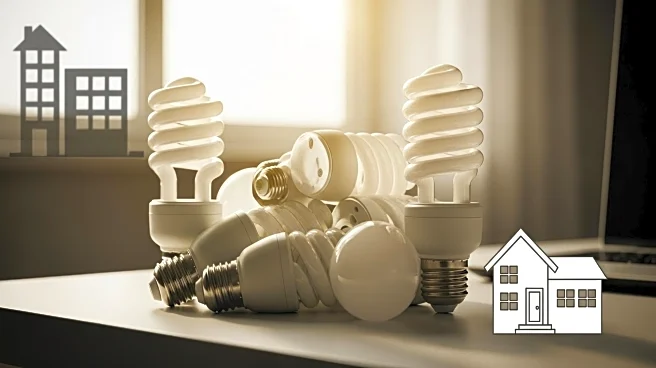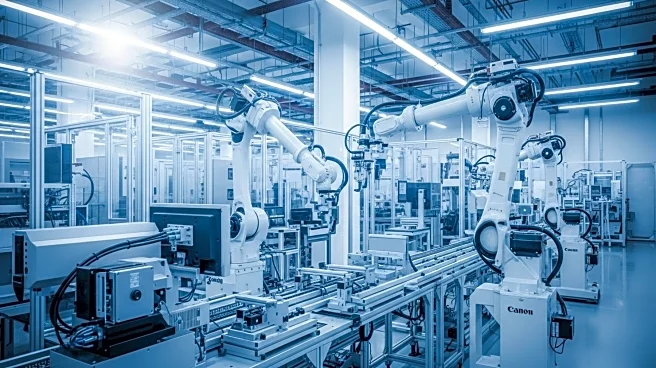What's Happening?
Energy Vault, a Switzerland-based energy storage company with U.S. headquarters in California, has partnered with Pacific Gas & Electric (PG&E) to deploy a hybrid microgrid energy project in Calistoga, California. The Calistoga Resiliency Center (CRC) integrates advanced hydrogen fuel cells with lithium-ion batteries to provide a sustainable solution for power resiliency amidst wildfire risks. The microgrid system, with a capacity of 293-MWh, is designed to maintain power during Public Safety Power Shutoffs (PSPS), a protocol to mitigate wildfire risks from electrical equipment. The system can deliver at least 48 hours of continuous power with a peak output of 8.5 MW during PSPS events. The project aligns with California's Renewable Portfolio Standard and meets PG&E's long-duration energy storage requirements.
Why It's Important?
The deployment of the Calistoga Resiliency Center is significant as it addresses the growing challenges of power disruptions due to wildfires in California. By providing a zero-emission solution, the project supports the state's renewable energy goals and enhances grid resiliency. Communities vulnerable to climate-driven disruptions stand to benefit from reliable power supply, reducing the impact of outages on essential services. The collaboration between Energy Vault and PG&E exemplifies innovation in energy solutions, potentially setting a precedent for future utility-scale hybrid microgrid deployments across regions prone to wildfires.
What's Next?
Energy Vault plans to use the CRC as a model for future utility-scale hybrid microgrid system deployments. The project was supported by $28 million in financing, including the sale of investment tax credits. PG&E continues to expand its microgrid initiatives, with commitments to fund additional community microgrids in California. The success of the Calistoga project may encourage further investments in similar technologies, enhancing power resiliency in other high-risk areas.
Beyond the Headlines
The Calistoga Resiliency Center highlights the potential for hydrogen fuel cells in sustainable energy solutions. The use of liquid hydrogen extends run time without interrupting power supply, offering cost-effective resiliency services. This innovation could influence broader adoption of hydrogen technology in energy systems, contributing to long-term shifts towards cleaner energy sources.












